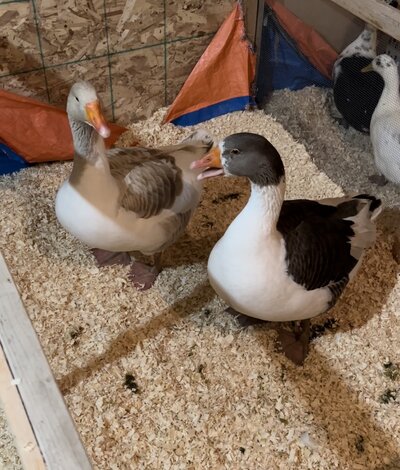I am going to try my luck at hatching my goose eggs
Anyone with tips and experience please share
My goose is young so I know it’s possible it won’t work
This is her second batch
She was born in April 2023.
She started to lay in late nov / dec
Then stopped till a few days ago
Her gander is almost 2 years old and they have been fully in breeding since mid December
The first batch we just ate the eggs or gave away for friends and family to eat
I have tried reading online and there are many different ways
Turning the eggs - some said side to side and others said end over end
Humidity was ranging from 50% to 70
Misting and cooling was day 5 others said day 15
I hatch a lot of duck eggs with great hatch rates
I mist cool starting day 10
My humidity is 40-45%
I turn side to side
Wondering if I follow the same guidelines I use for my duck eggs or if I need to change things up
Any advice with great success would be greatly appreciated
Her eggs average 138-148 grams
Stella and Gary are Pomeranian saddlebacks
Anyone with tips and experience please share
My goose is young so I know it’s possible it won’t work
This is her second batch
She was born in April 2023.
She started to lay in late nov / dec
Then stopped till a few days ago
Her gander is almost 2 years old and they have been fully in breeding since mid December
The first batch we just ate the eggs or gave away for friends and family to eat
I have tried reading online and there are many different ways
Turning the eggs - some said side to side and others said end over end
Humidity was ranging from 50% to 70
Misting and cooling was day 5 others said day 15
I hatch a lot of duck eggs with great hatch rates
I mist cool starting day 10
My humidity is 40-45%
I turn side to side
Wondering if I follow the same guidelines I use for my duck eggs or if I need to change things up
Any advice with great success would be greatly appreciated
Her eggs average 138-148 grams
Stella and Gary are Pomeranian saddlebacks



